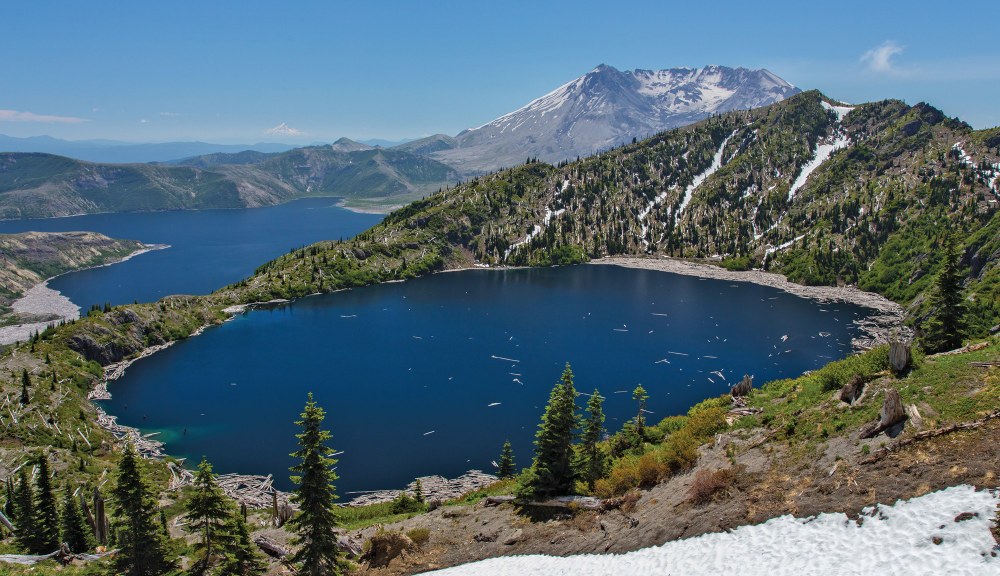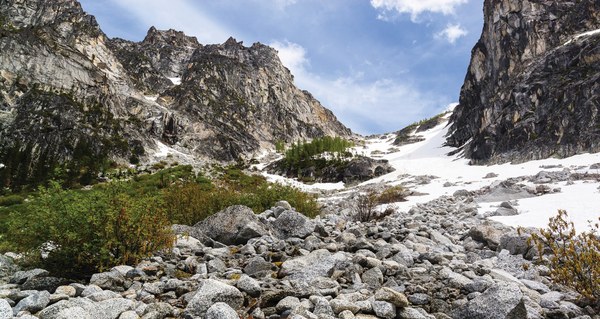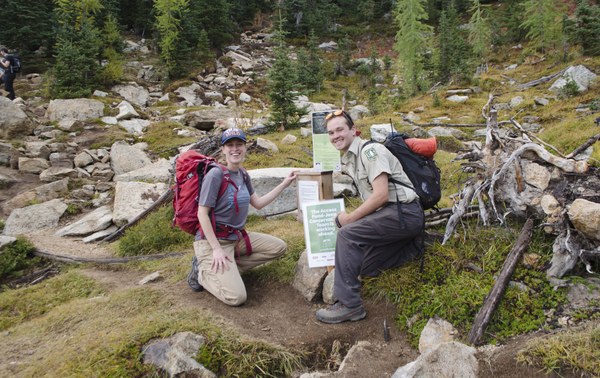
On my way home from work in February, I gave one of my colleagues at the Forest Service a ring. A wave of federal agency workforce cuts had just been announced, and while I knew the Forest Service was impacted, I had no idea how deeply. I won’t forget my colleague’s response when I asked about the extent of the layoffs. After a long pause, they said “…we’ll only have a single person working in the Enchantments this summer.”
Federal land management agencies have been chronically underfunded for decades, but February’s cuts felt like a turning point as agency staff were reduced to unprecedented levels. At the administration’s direction, the Forest Service fired 10% of its entire workforce, while the National Park Service cut 1,000 employees nationwide. In some areas, entire trail crews were eliminated.
The administration claimed these reductions would improve efficiency by eliminating unnecessary roles. In reality, these reductions cut the people directly responsible for the care of Washington’s public lands. With uncertainty around rehiring these workers, as well as additional staff cuts expected, the future of the agency is unknown. Our national forests and parks will suffer as a result.
Agency firings: The tip of the iceberg
Earlier this year, park rangers, trail crews, and maintenance staff were starting to prepare for the busy summer recreation season. But the administration’s February federal workforce cuts – which included firing 125 Forest Service employees in Washington – halted much of that work before it could even begin.
The firings mainly targeted essential, on-the-ground staff who perform the daily operations that keep public lands safe, accessible, and thriving. These workers stock bathrooms, pack out improperly disposed human waste, empty trash bins, open campgrounds, clear downed trees, maintain thousands of miles of trails, and fight wildfires.
Before the February firings, the Forest Service was already short thousands of employees who they rely on to care for public lands. Due to a sweeping budget crisis, the agency made the decision not to hire seasonal or temporary workers in 2025. Meanwhile, the Park Service saw a 20% reduction in full-time staff over the last 15 years, even as visitation rose by 16% during the same period.
These agencies need more staff, not less. Yet as we head into the busy summer recreation season, both agencies' lean workforces will be stretched even thinner. The Forest Service in particular will face a nearly existential question: how can public lands be stewarded and visitation managed when so much of the recreation workforce has been lost?
 Aasgard Pass in the Enchantments. In February, nearly the entire trail and wilderness crew responsible for protecting the Enchantments were fired by the administration. Photo by Luke Helgeson.
Aasgard Pass in the Enchantments. In February, nearly the entire trail and wilderness crew responsible for protecting the Enchantments were fired by the administration. Photo by Luke Helgeson.
How will workforce reductions impact outdoor recreation?
With fewer staff, the Forest Service will have a harder time caring for our national forests. Trails may go unmaintained, recreation facilities like toilets may be closed to the public, and waste may go unremoved.
In the Enchantments – the most popular and fragile zone in the Alpine Lakes Wilderness – all but one member of the wilderness and trail crew was fired. Each season, these staff maintain 30 backcountry toilets and pack out 1,000 piles of improperly disposed human waste. Without these workers, maintenance tasks may fall on the shoulders of volunteers - or won’t be done at all. Meanwhile, over 70% of recreation staff in the Mount Baker-Snoqualmie Forest were fired in February, while the Mount St. Helens National Volcanic Monument in the Gifford Pinchot National Forest lost all but one of its recreation staff. The good news is that workers who help The Mountaineers obtain critical permits for our courses (special uses staff) were largely unaffected by the cuts.
The Park Service saw fewer workforce reductions and were even granted the ability to hire seasonal staff. But the chaos that has characterized the first few months of the administration - including a federal hiring freeze, agency workforce reductions, and plans to shutter national park offices - has delayed the Park Service’s hiring schedule, which may impact the visitor experience this summer.
There is a lot that remains uncertain. In March alone, a pair of federal judges ruled that the Park Service and Forest Service had to reinstate fired employees. As a result of this ruling, many workers were rehired, only to be placed directly on administrative leave (meaning many of these employees were not allowed to do any work). Meanwhile, the administration asked the Supreme Court to block the judge’s ruling to reinstate fired workers. With court battles for the fate of these employees far from settled, and with broader federal workforce cuts expected in the coming months, we anticipate that the status of our public lands, and the workers who steward them, may change between the time of writing this article and publication.
 A Forest Service ranger and Katherine Hollis, former Mountaineers Conservation & Advocacy Director, pose during a trail workday at the Liberty Bell group in the Okanogan-Wenatchee National Forest in 2018. Volunteer trail work crews may need to fill the gaps left behind by a diminished federal workforce this summer. Photo by Peter Dunau.
A Forest Service ranger and Katherine Hollis, former Mountaineers Conservation & Advocacy Director, pose during a trail workday at the Liberty Bell group in the Okanogan-Wenatchee National Forest in 2018. Volunteer trail work crews may need to fill the gaps left behind by a diminished federal workforce this summer. Photo by Peter Dunau.
How to support federal public lands
Since speaking with my Forest Service colleague, I’ve spent hours on the phone and in person with our agency partners. They’ve all shared a similar message: we’re still here, and we’re still protecting, stewarding, and managing our national forests and parks. Despite all the bad news, these people make me feel as though there’s a bright future for our public lands. The Mountaineers community gives me hope as well: our members sent over 3,000 messages to Congress asking them to fight back against agency workforce cuts, and our staff has shared concerns with lawmakers and the media, including co-publishing an op-ed in the Seattle Times with Washington Trails Association. We’ll continue to advocate with our partners for a fully funded and properly staffed Forest Service and Park Service.
HOW YOU CAN HELP
This summer, our public lands and the staff who steward them need all the support we can offer. Here’s how you can help fill the gaps left behind by a diminished federal workforce:
- Always remember to recreate responsibly.
- Be prepared for limited toilet facilities. Always bring a human waste disposal kit when you venture into the outdoors.
- If you see something that needs attention on public lands - an overflowing toilet, washed-out bridge, or brushy trail - document it by emailing conservation@mountaineers.org. We’ll use these examples to highlight the impacts of agency staff reductions when advocating for public lands funding with lawmakers.
- In addition to the Ten Essentials, bring an extra trash bag or two. Picking up trash is a small act that makes a big difference.
- Participate in a stewardship opportunity through The Mountaineers or another organization. Our public lands need some tender love and care.
- Take our Action Alert to speak up against agency firings: mountaineers.org/agencyfirings_actionalert.
- If you see Forest Service or Park Service staff out on the trail, be sure to give them a BIG thank you!
This article originally appeared in our summer 2025 issue of Mountaineer magazine. To view the original article in magazine form and read more stories from our publication, visit our magazine archive.
 Nathaniel Rees
Nathaniel Rees